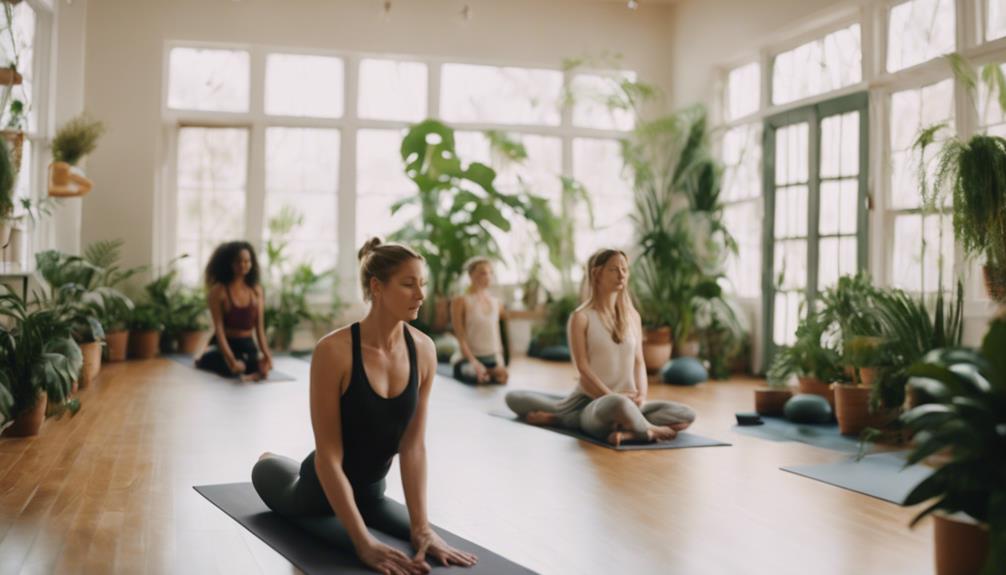Aerial Yoga

What is Aerial Yoga?
Aerial yoga is a unique form of exercise that combines traditional yoga practices with the use of a suspended fabric hammock. This innovative fitness trend allows practitioners to perform various yoga poses while being partially or fully supported by the aerial hammock. Originating from the fusion of yoga, acrobatics, and dance, aerial yoga has gained immense popularity for its ability to enhance flexibility, strength, and balance. Whether you are a seasoned yogi or a beginner, aerial yoga offers numerous benefits that can elevate your practice and transform your body.
The Benefits of Aerial Yoga
The benefits of aerial yoga are both physical and mental. One of the most significant advantages is the increased flexibility it promotes. The hammock allows practitioners to deepen stretches and hold poses that may be challenging on the ground. Additionally, aerial yoga helps build core strength and stability, as maintaining balance in the hammock engages various muscle groups. On a mental level, the practice encourages mindfulness and relaxation, reducing stress and anxiety. Aerial yoga also improves circulation and can alleviate back pain, making it an excellent choice for individuals seeking relief from discomfort.
Aerial Yoga vs. Traditional Yoga: What’s the Difference?
While both aerial yoga and traditional yoga share similar principles and goals, the key difference lies in the use of the hammock. Traditional yoga relies on mat-based poses, while aerial yoga incorporates the hammock to support and enhance movements. This support enables practitioners to explore inversions and challenging poses with greater ease and safety. In contrast, traditional yoga emphasizes grounding and alignment without the assistance of props. Ultimately, the choice between aerial yoga and traditional yoga depends on personal preference and fitness goals, but many find that incorporating aerial yoga into their routine enriches their overall experience.
Getting Started with Aerial Yoga: Tips for Beginners
If you’re intrigued by aerial yoga and want to give it a try, here are some tips for beginners to ensure a safe and enjoyable experience. First, seek out a reputable studio that specializes in aerial yoga classes. It’s crucial to learn from certified instructors who can teach you proper techniques and safety measures. Wear comfortable, form-fitting clothing that won’t get caught in the hammock, and avoid jewelry that may snag. Additionally, be open to trying new poses and variations, as aerial yoga is all about exploration and playfulness. Finally, listen to your body—if something doesn’t feel right, don’t hesitate to modify or skip a pose.
Related Posts:
Essential Aerial Yoga Poses for Every Level
There are various aerial yoga poses that cater to different skill levels. For beginners, poses such as the “Supported Downward Dog” and “Aerial Child’s Pose” are great starting points. These poses help you become familiar with the hammock while building strength and flexibility. As you progress, you can explore intermediate poses like “Aerial Warrior” and “Aerial Backbend,” which challenge your balance and core stability. Advanced practitioners can attempt poses like “Aerial Inversion” and “Aerial Splits,” which require greater strength and coordination. Each pose offers unique benefits, so be sure to practice consistently to develop your skills and confidence.
The Role of Breath in Aerial Yoga
Breath control is a vital component of any yoga practice, and aerial yoga is no exception. Proper breathing techniques can enhance your experience and deepen your connection to the practice. In aerial yoga, breath serves as a guide for movement and can help you maintain focus and calmness. Practitioners are encouraged to synchronize their breath with each pose, inhaling during expansion and exhaling during contraction. This mindful approach not only improves physical performance but also cultivates a sense of inner peace and well-being, making your aerial yoga practice both physically and mentally enriching.
Safety Considerations and Precautions
While aerial yoga is generally safe when practiced under the guidance of a qualified instructor, it is essential to take certain precautions to minimize the risk of injury. Before starting your aerial yoga journey, consult with a healthcare professional, especially if you have pre-existing conditions or concerns. Always listen to your body and avoid pushing yourself into poses that feel uncomfortable or painful. Ensure that the hammock is securely anchored and that you are familiar with its structure before attempting any inversions. Finally, practice with a buddy or in a supervised class setting, especially when trying new or challenging poses.
How to Incorporate Aerial Yoga into Your Fitness Routine
Integrating aerial yoga into your fitness routine can enhance your overall well-being and provide a refreshing change from traditional workouts. Aim to practice aerial yoga 1-2 times per week, allowing your body to adapt and recover between sessions. You can complement your aerial yoga practice with other forms of exercise, such as strength training, cardio, or traditional yoga, to achieve a well-rounded fitness regimen. Additionally, consider incorporating mindfulness practices like meditation or breathwork to enhance your mental clarity and focus. By creating a balanced routine, you can enjoy the myriad benefits that aerial yoga has to offer.
Conclusion: Embrace the Aerial Yoga Experience
Aerial yoga is not just a workout; it’s an experience that invites you to explore your body and mind in new and exciting ways. With its numerous physical and mental benefits, aerial yoga can enhance your fitness journey and provide a sense of community among practitioners. Whether you’re looking to improve your flexibility, reduce stress, or challenge yourself physically, aerial yoga offers an accessible and enjoyable path to achieving your goals. So why not give it a try? Embrace the aerial yoga experience and discover a new world of movement, mindfulness, and self-discovery.Does Yoga Help You Lose Weight During PregnancyYoga TowelsHow Yoga Transforms Your Body